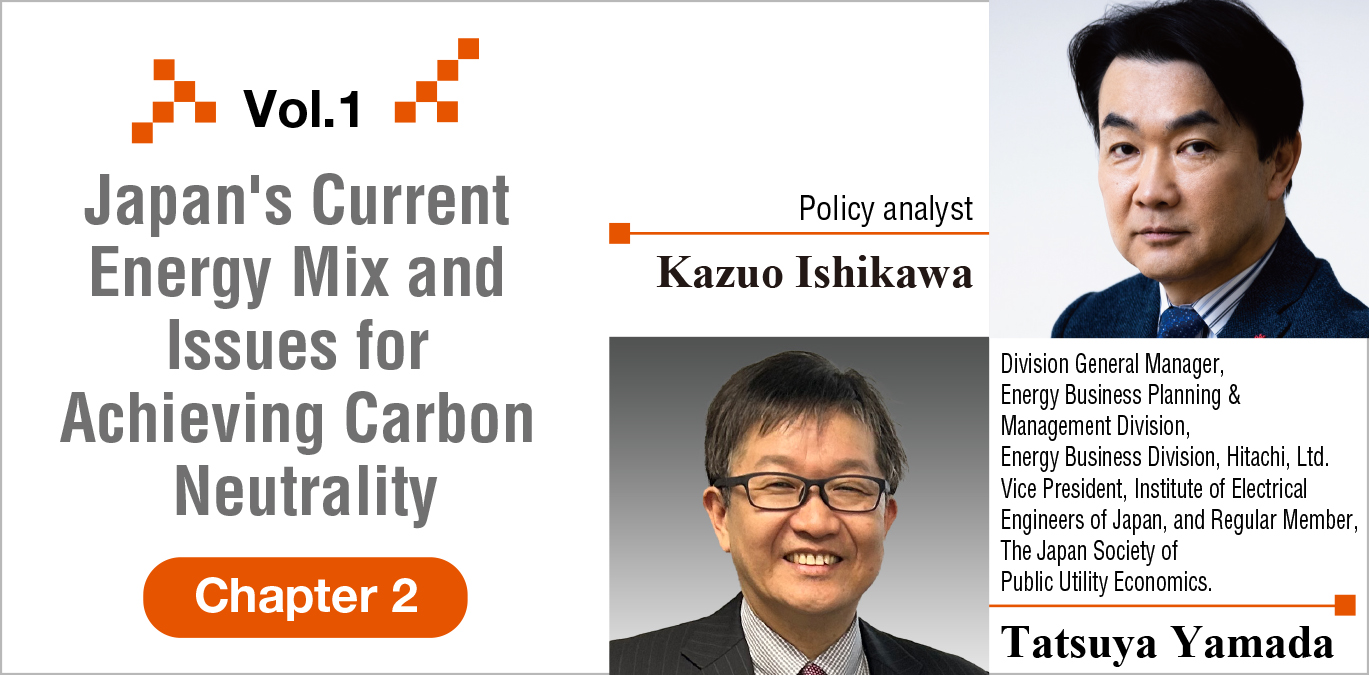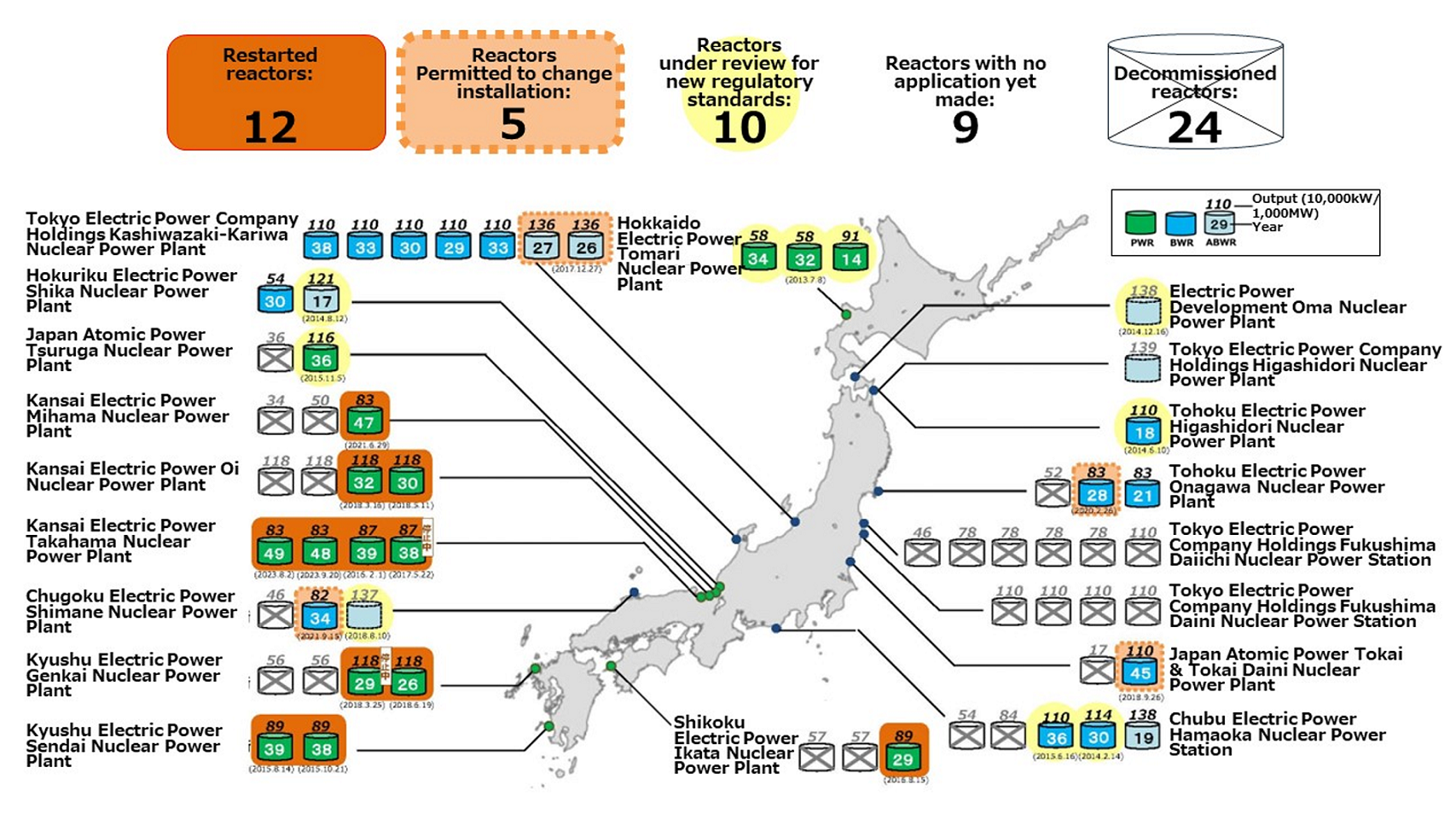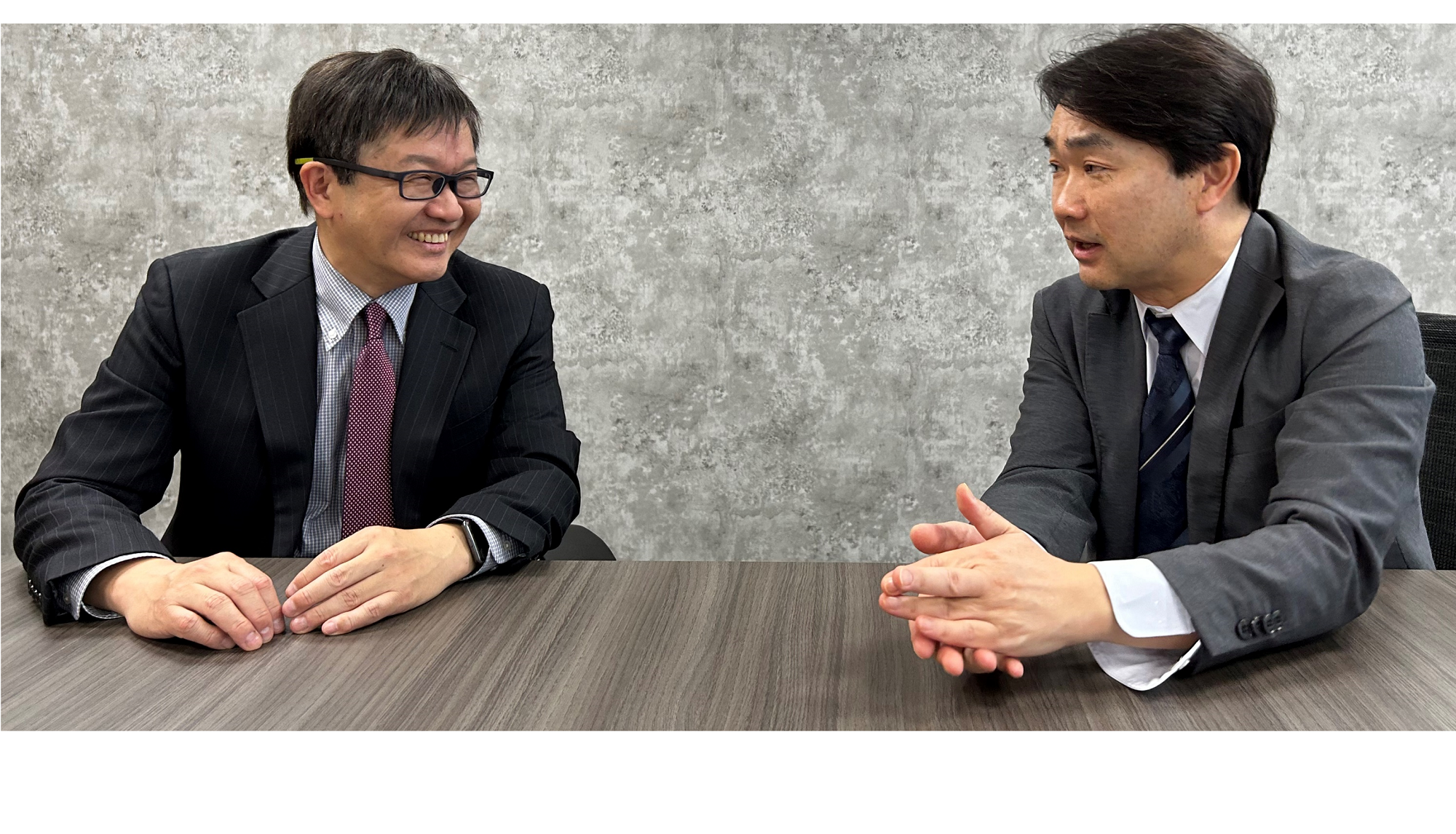In this series of articles, under the theme of achieving carbon neutrality, we invite experts who are working on energy issues in various fields to engage in a discussion with Tatsuya Yamada―Division General Manager of Hitachi's Energy Business Division, which is working on policy proposals relating to electric power and energy―and introduce trends in each industry. Through these discussions, we consider carbon neutrality from various angles, such as the formulation of a process and vision for achieving carbon neutrality, initiatives aimed at achieving it, and environmental development.

In the first part of this article, Kazuo Ishikawa talked about the challenges of energy supply and demand in Japan and overseas, as well as the problems caused by the liberalization of electric power. In the middle section, the discussion shifts to the energy mix that Japan should aim for in order to achieve carbon neutrality and the potential of each type of energy―in particular, the role of nuclear power, and the challenges of renewable energy.
Yamada: What policies and energy mix do you think Japan should aim for to achieve carbon neutrality? As we mentioned last time, Mr. Ishikawa, you were saying that Japan's energy mix should be returned to the state it was in 2010.
Ishikawa: Yes, and nuclear power plays an important role in that. Firstly, it is essential to properly restart the 33 existing nuclear power plant reactors we already have in Japan. On top of that, the two new reactors that are currently under construction should be completed and put into operation. By the mid-2030s, some of the existing nuclear power plants will probably be decommissioned, so I think by then we should proceed with the development of innovative next-generation reactors incorporating new safety mechanisms.
If it is difficult to gain the understanding of the public to build new plants in Japan at present, I think that it would be better to first build up a track record overseas and then import them back, so to speak. If we can use nuclear power again as our base power supply in this way, I think it will be possible to increase the overall percentage in our energy mix to around 35%. In fact, from the 2000s up until 2010, we actually achieved that kind of ratio. If we can do that, then we should be able to reduce fossil fuels considerably.

Current State of Nuclear Power Plants in Japan
Source: Agency for Natural Resources and Energy (ANRE), State of Nuclear Power Policy,
Nuclear Power in Japan
Yamada: So, the idea is that the amount of fossil fuels can be reduced by an increase in nuclear power. With regard to nuclear power, Russia's invasion of Ukraine has left the entire world facing energy security issues, and now Prime Minister Kishida has finally made it clear at the GX Executive Implementation Council that the Japanese government, too, will utilize nuclear power, in a break from its policy since the 2011 Tohoku earthquake and tsunami, and has started to act on it. But I feel that there is still no concrete movement at present.
The public offering of the Long-Term Decarbonized Power Supply Auction system to encourage investment in long-term power sources―by promising to purchase 20 years' worth of electric power―could be called a step forward in itself. This system can also be used for nuclear power, but in reality many of the existing power plants have been stopped. With it not even possible to restart the plants at this point, it is unclear whether or not this scheme will lead to new construction...
Ishikawa: That's right. Certainly, it will take time to make use of the new system, so I think we should first restore things to the way they were and restart (the plants). However, I believe that new reforms will be needed to achieve this. After the 2011 Tohoku earthquake and tsunami, in response to the accident at the Fukushima Daiichi Nuclear Power Plant, an organization called the Nuclear Regulation Authority (NRA) was created, and very strict new regulatory standards were established for restarting plants. There are currently around 12 reactors that have cleared this review and have been able to restart operations. The review process has dragged on, and not a single reactor is yet able to operate in eastern Japan. How should we view this? The restart of Reactor 7 at the Kashiwazaki-Kariwa Nuclear Power Plant―which was scheduled to start operation in October 2023―has also been delayed by the NRA, and the restart has now been postponed to 2024 or later. Despite the government's approval of a rate increase in anticipation of the restart, the postponement of the restart represents yet another betrayal for TEPCO's shareholders. This cools their attitude toward investment.
Yamada: Looking overseas, there are high expectations for nuclear power, as shown by the pledge made at UNFCCC COP28 (28th Conference of the Parties to the United Nations Framework Convention on Climate Change) to triple the world's nuclear capacity by 2050. In particular, I think it will be a boost for the advancement of nuclear power in China and other Asian countries where there is growing demand for electricity.
Ishikawa: Yes, I agree. In particular, the small modular light-water reactor that Hitachi is working on with GE is highly safe and economical, and I think it is a very promising technology that can contribute to the realization of carbon neutrality. It can be installed on a small site area, or can be added to the site of an existing nuclear power plant. Originally there is a need for this technology in Japan, but regulations are still a barrier to the construction of new nuclear plants. I think we need to change this.
Yamada: What are your thoughts on renewable energy in the energy mix?
Ishikawa: I think it would be good to have a total of around 20% domestically generated power. Then we would cover the rest with fossil fuels. In terms of the breakdown, I think that hydroelectric power will stabilize at just under 8%. But even if solar power increases in the future, it will only generate electricity for around 8 hours during the daytime, so the remaining 12 hours will have to be covered by adjustment with thermal power sources. It is therefore necessary to properly introduce a method of recovering the costs of maintaining thermal power generation. The same is true for nuclear energy, and there is a need to establish legislation that allows for the recovery of investment costs. In other words, I think there is a need to reestablish a mechanism for stable investment in nuclear and thermal power generation, rather than the current measures.
As you know, such a mechanism has already been established for renewable energy through the Feed-in Tariff (FIT) scheme for renewable energy. Now that the purchase price has dropped it is not as much of a tasty incentive as it used to be, but at the time of its introduction FIT was a strong incentive, and helped to accelerate investment. But even now, it is still possible to recoup on new investments even with the lower purchase price.
There are often people who say that it is better to abandon FIT―but I think that if we liberalize renewable energy, too, then some companies will go bankrupt right away, and their willingness to invest will decrease. Another 20 years from now, solar panels will deteriorate, and it would be a problem if they were left as they are, right? If there is no similar way to recoup on investments after the expiration of the FIT purchase price period, we may end up seeing environmental damage due to solar panels left unmanaged. There is also a risk of spontaneous combustion, so these panels are potentially dangerous if left as they are.
Yamada: There are many issues to be addressed with regard to renewal energy.
Ishikawa: The first problem is that if we increase the amount of renewable energy, the amount of electricity generated during the day will exceed the amount of demand, meaning that a large amount of surplus power will be generated. The amount of demand will be exceeded, so―under current conditions―the excess would be discarded. I think that would be a massive waste, so I am hopeful about EV batteries as an alternative to storage cells and gasoline in the future. If EV batteries become more quickly rechargeable and lightweight, then they will become a very good market, and will contribute greatly to humanity. If we can increase the number of local storage batteries, we can store the excess power generated by renewable energy, and sometimes the surplus power generated by nuclear power plants. We can create a stockpile, so to speak. I expect the range of technologies relating to electricity stockpiling and storage to expand.

Yamada: I'd like to take a closer look at renewable energy. What do you think about the roles and percentage ratios for each type?
Ishikawa: Japan already boasts the world's third largest amount of solar power generation, after China and the United States. But it has already become very difficult to build new solar power plants on inexpensive land where there is low demand. Since solar power has become subject to speculative investment due to the FIT scheme, and this has led to environmental destruction, it will be more difficult to build new solar power plants on land in the future.
If perovskite solar cells―which use technology originally developed in Japan and are expected to be the next-generation solar power generation system―achieve more widespread adoption, they will be installed on the roofs, walls, and windows, etc., of existing office buildings, public facilities, and homes. Perovskite solar cells are thin and lightweight, so they can be easily installed anywhere. They can therefore also be used for mega solar installations even after the end of the FIT scheme by attachment to the surface of existing panels. They are currently still in the development stages, but are expected to be put into practical use by around 2028. For reasons such as this, I believe that Japan will continue to be one of the top countries in the world in terms of solar power generation.
Wind power, on the other hand, is difficult to deploy on land. The building we are in now has over 20 floors, but the wind power turbines being built in Europe and China are even taller than this building. Due to noise issues, there are few places where they can be built on land. There are hopes for offshore wind farms, and the development of one such farm has already begun at Noshiro Port in Akita Prefecture. The utilization rate does not seem bad at all. However, since the wind turbine blades are manufactured in China or Europe, the equipment that converts the energy will use foreign products. In other words, it is necessary to clear the issue of ensuring economic security. It's the same story with solar panels at the moment.
Biomass is essentially waste-to-energy generation, which ultimately means that waste is being used as a fuel for thermal power generation. It is very good to be able to generate electricity by local production for local consumption, since the fuel is available in Japan, but the high cost is a bottleneck. The development of furnaces that can burn any kind of waste is the key. With regard to biomass, though, I am worried that the EU will eventually treat biomass as a form of thermal power generation. In other words, there is a possibility that it will be subject to reduction.
Additionally, the current situation with large-scale hydroelectric power will be maintained, but although small-scale hydroelectric power is covered by FIT, there are few sites where plants can be installed, and the amount is limited. As for geothermal energy, if it is binary power generation that uses surplus hot water in hot spring areas, it will be possible to introduce it on a local production for local consumption basis, but it must be on a small scale. Where new ground has to be dug, the risks are high, and it is not easy to attract investment. If digging is not done well, there will be trouble in coordinating with hot spring areas. Japan is said to be a country that is rich in geothermal resources, but if these resources cannot be used effectively then it is essentially the same as not having any.
As I have said many times, it is currently thermal power that compensates for the instability of power sources such as solar and wind power. New thermal power stations using oil as a fuel will not be built in the future, so we have no choice but to use and maintain those we already have. The remaining options are natural gas and coal, but natural gas is expensive in terms of procurement costs. Coal has a bad reputation from the perspective of global warming, but Japan's current combustion technologies are at the very highest level, and we will surely continue to use and maintain our coal-fired power plants. After all, remaining oil and natural gas reserves are expected to last for another 50 years, but coal is expected to last for another 130 years. In reality, the amount of these reserves will be much larger, so it would be a waste to simply abandon this technology. I think that maintaining Japan's highly efficient, high-performance technological capabilities will ultimately contribute to a sustainable future for humanity.
In any case, I think it is very important to keep sites and frontline personnel for the maintenance and improvement of coal-fired thermal power generation and natural gas technologies. Germany has stopped its nuclear plants. But if the plant personnel are gone then there will be no one to provide support even if they eventually try to restart them. If there is no one to work these sites, there is nothing that can be done with the facilities alone.
Yamada: In fact, without new design, construction, and operation going on, it is impossible to gain experience. Even if you train in a simulator, it is still only training, so it is still different from gaining real experience in the field. It is very important to continue these operations to maintain human resources, technologies, and know-how.
Kazuo Ishikawa
Policy analyst
1965: Born in Fukuoka
1984-1989: Department of Resource Development Engineering, Faculty of Engineering,
The University of Tokyo
1989-2008: Ministry of International Trade and Industry
(Ministry of Economy, Trade and Industry / METI)
(In charge of electric power and gas market liberalization, renewable energy, environmental assessments, rationalization of domestic coal mining, industrial safety, industrial finance and SME finance, installment sales and credit, reform of the national civil service system, etc.)
(Since his retirement, he has served as a member of the Cabinet Office Council for Regulatory Reform and Council for Administrative Reform work groups, a senior researcher at the Tokyo Foundation for Policy Research, a visiting professor at the National Graduate Institute for Policy Studies, a specially appointed professor at Tokyo Women's Medical University, and a visiting professor at Senshu University.)
2011: CEO, Institute for Industrial Growth and Social Security Policy (IIGSSP)
(Since then, he has served as an officer and advisor to many companies and organizations.)
September 2020-September 2022: Temporary Expert Advisor, Minister's Secretariat, Ministry of Economy, Trade and Industry
April 2021-: Regional Promotion Advisor, Suttsu and Kamoenai, Hokkaido
April 2022-: Presenter, Canary (Kazuo Ishikawa's Canary of Crisis), BS TV Tokyo
● Currently, he also appears on many other TV, radio, and online programs as a commentator and quiz show respondent.
● His business ventures include brain education for infants, elementary school students, and seniors, and various venture capital investments.
● He is also author of books such as The Right Way to Stop Nuclear Power Plants (PHP Shinsho), etc.
Tatsuya Yamada
Division General Manager, Energy Business Planning & Management Division,
Energy Business Division, Hitachi, Ltd.
Vice President, Institute of Electrical Engineers of Japan, and Regular Member,
The Japan Society of Public Utility Economics.
Tatsuya Yamada joined Hokuriku Electric Power Company in 1987, and was seconded to The Institute of Energy Economics, Japan in 1998 before joining Hitachi, Ltd in 2002.
He has engaged in tasks involved in the planning of strategies for energy-related businesses, and became Director of the Management Planning Office, the Strategy Planning Division in 2014, Senior Manager of the Business Planning Division, the Energy Solution Business Unit in 2016, General Manager of the Business Planning Division, the New Age Energy Business Co-create Division in 2019, and assumed his present positions in 2020.